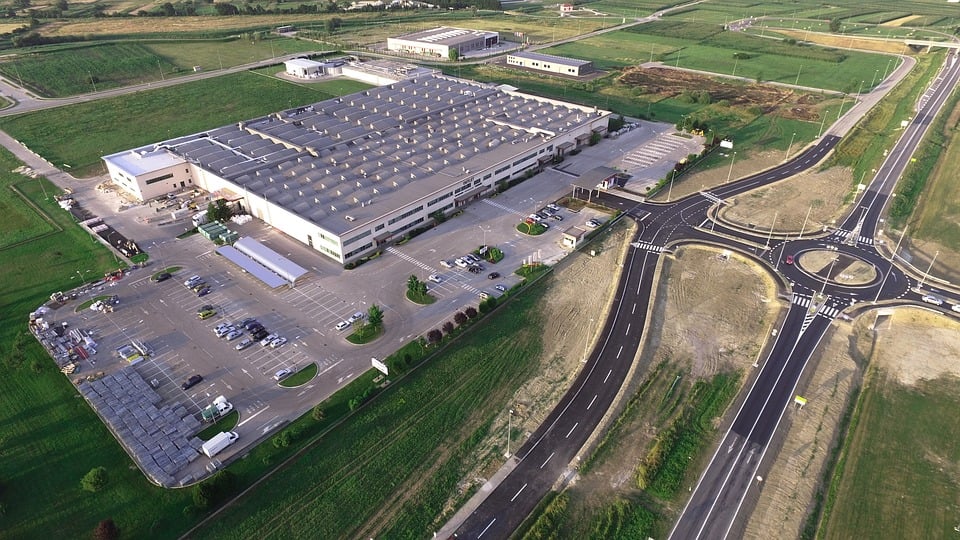Sustainability | June 25, 2024
Seattle’s Building Emissions Performance Standards: A Look at Key Legislation
This is the fifth in a series of articles outlining recent updates to building performance policies across the U.S. Stay tuned for more information on other jurisdictions over the coming weeks.
To learn more about Washington State’s recent Clean Building Performance Standards (CBPS), which have a broader impact beyond Seattle, take a look at our other post focused on those policies.
As the Pacific Northwest continues to take charge of climate action, Seattle stands at the forefront with its ambitious Building Emissions Performance Standards (BEPS). But how does this local policy compare to the broader Washington State Clean Buildings Performance Standard (WA CBPS)? And what do these regulations mean for you as a commercial or industrial business striving for energy efficiency and compliance? This blog post will answer these questions and provide the insights you need to ensure compliance and successful strategic adaptations.
The Breakdown - What Is Seattle’s “BEPS?”
Seattle’s BEPS sets carbon emissions reduction targets for existing commercial and multifamily buildings larger than 20,000 square feet. The goal is a 27% reduction in building emissions by 2050. Here are the key points you should note from the policy:
- Effective Date: The policy took effect after unanimous approval by the City Council and Mayor Harrell in December 2023.
- Compliance Timeline: Buildings must meet emissions targets starting in 2031 for the largest buildings.
- Steps Toward Compliance: Benchmark and assess current emissions, implement energy-efficient measures, and monitor progress.
Comparing Seattle BEPS and WA CBPS:
Seattle BEPS: Local Focus and GHG Emissions Targets
Seattle’s BEPS is a local policy that sets specific greenhouse gas emissions (GHG) limits for existing commercial and multifamily buildings larger than 20,000 square feet. The policy aims to reduce building emissions by 27% by 2050. This approach is tailored to Seattle’s unique context and emissions reduction goals.
- Policy Scope: Local policy for Seattle.
- Target Buildings: Existing commercial and multifamily buildings larger than 20,000 square feet.
- Primary Focus: Sets specific greenhouse gas emissions (GHG) limits.
- Emissions Reduction Goal: Aims to achieve a 27% reduction in building emissions by 2050.
- Unique Aspect: This approach suits Seattle’s unique context and emissions reduction goals.
WA CBPS: Statewide Scope and Energy Use Intensity Targets
On the other hand, the WA CBPS is a statewide policy that focuses on improving energy efficiency across all commercial buildings larger than 50,000 square feet. It sets fixed Energy Use Intensity (EUI) targets for buildings to meet between 2026-2028, depending on building size.
- Policy Scope: Statewide policy for Washington.
- Target Buildings: All commercial buildings larger than 50,000 square feet.
- Primary Focus: Focuses on improving energy efficiency.
- Energy Efficiency Goal: Sets fixed Energy Use Intensity (EUI) targets for buildings to meet between 2026-2028, depending on building size.
Understanding Penalties for Noncompliance:
Seattle encourages compliance through comprehensive engagement programs and incentives. However, noncompliance carries penalties. Based on building size, flat fines of $15,000 or $7,500 may be levied for failure to report or inaccurate reporting. From 2031, if buildings fail to meet GHGI targets, penalties per square foot are as follows:
- $2.50 for low-income housing/low-rent multifamily buildings
- $7.50 for other multifamily buildings
- $10.00 for nonresidential buildings
The Director has the authority to establish grace periods and mitigate fines. Understanding these penalties is crucial for businesses to strategize their compliance journey effectively.
Navigating Compliance: What Businesses Can Do
Understanding the path to compliance is crucial in the face of new regulations. The journey towards meeting Seattle’s BEPS and Washington’s CBPS standards may seem daunting, but with the right approach, it can be a strategic opportunity.
- Assess your buildings' performance: Understand your buildings' current energy use and emissions and how that has trended over time.
- Uncover opportunities for better performance: Dive into that data for opportunities to execute high-ROI projects that will move the needle
- Prioritize your energy efficiency projects: By strategically implementing retrofits, operational changes, and deploying right-sized energy-management technologies, you can find a path forward within your available budget.
- Stay Informed: Watch for additional guidance from market intelligence experts like Mantis.
Taking a Collaborative Approach
As we navigate this new era of building performance standards, collaboration and transparency become key elements of success. These business challenges are complex, and no organization can solve them alone.
- Learn together: Engage with industry peers, attend workshops, and share best practices.
- Build relationships along your supply chain: Your industry partners can help unlock efficiencies. Learn how in this Connex2024 conference recap.
- Transparency: Be open about your journey—successes and challenges alike.
- Adapt and thrive: Use these policies as opportunities to innovate, optimize, and uncover opportunities to improve building performance.
In Conclusion
Seattle’s BEPS and Washington’s CBPS are more than regulations—they’re catalysts for change. Businesses that embrace energy efficiency and compliance now will reap the benefits of reduced operating costs and risk. By being proactive, organizations can set themselves apart from the competition.
As Seattle’s building performance standards go into effect, we'll continue to provide updates and insights. We encourage you to visit our website and subscribe to our newsletter for the latest developments.
Mantis Innovation is at the forefront of helping organizations understand and navigate this rapidly evolving regulatory environment and is adept at driving compliance efforts for building owners and operators.
Contact us today to learn how we can help you become and remain compliant, avoid penalties, and create value for stakeholders through the process.
Stay tuned for more updates on building performance standards across the U.S. as we continue to track these important developments.
Related Posts
Discover more content and insights from Mantis Innovation

Carbon Credits Explained: A Primer for Achieving Your ESG Goals
In the race to achieve net-zero emissions, carbon credits have become a crucial tool for companies with hard-to-abate emissions. As of 2024, almost half of the Fortune 500 companies have net zero

Five Trends Driving Data Center Facility Energy Optimization
Today’s digital economy, commercial and industrial digitalization, and the recent explosion in artificial intelligence and machine learning (AI/ML) powered computing are driving massive growth in

Modernizing Manufacturing Facilities: The Drivers and Direction
This blog is just a glimpse into the deep dive we take in our new white paper, Modernizing Manufacturing. Download the white paper here to skip the teaser and get the whole story. The stage is set

Federal and State Policies Driving Commercial Fleet Electrification
As governments and industry transition to a low-carbon economy, regulations have begun rolling out at the federal level and in leading-edge states focused on commercial fleet electrification. Policy